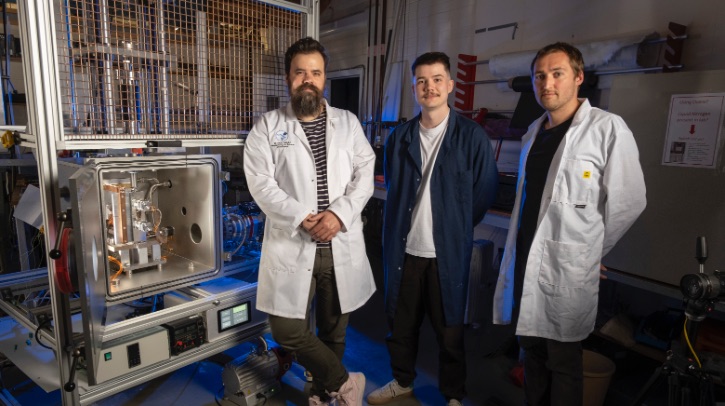Researchers at the University of Glasgow’s James Watt School of Engineering have built the NextSpace Testrig, which it says is the world’s first dedicated facility for testing the structural integrity of materials that will be 3D printed in space.
The NextSpace Testrig was developed by the university’s Dr Gilles Bailet in partnership with The Manufacturing Technology Centre, supported by £253,000 (US$338,000) in funding from the UK Space Agency (UKSA)’s Enabling Technology Programme.
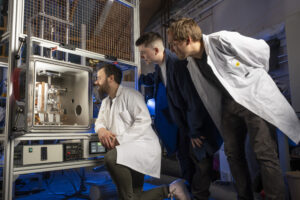
Testing facility
The facility, which uses a specially constructed vacuum chamber capable of generating temperatures between -150°C and +250°C to create space-like conditions on Earth, is designed to help support the developing field of space manufacturing.
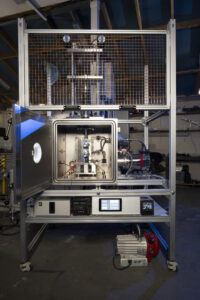
The testing facility features a magazine system that can autonomously test multiple samples in a single cycle, making it significantly more efficient than traditional testing methods. The system can apply up to 20 kilonewtons of force (equivalent to 2,000kg) to break samples and analyze their properties in vacuum conditions matching those of space. It can also subject samples to cycles of extreme temperatures mimicking those they would face in orbit.
According to the team, no previous research facility has been dedicated to ensuring that polymers, ceramics and metals printed in orbit will be able to withstand the extreme physical strains they will face in space.
The facility is the latest development in Dr Bailet’s research in spaceborne additive manufacturing. He has also patented a prototype 3D printer which is designed for use in orbit and has been tested during a series of trips on a research aeroplane known as the ‘vomit comet’.
Space manufacturing
Space manufacturing aims to change how objects and materials are sent into orbit. Instead of carrying complete devices like solar reflectors into space on rockets, specially designed 3D printers could create structures more cheaply directly in orbit instead. Several experiments have already sent prototype 3D printers into orbit and metal parts have been 3D-printed by astronauts on board the International Space Station.
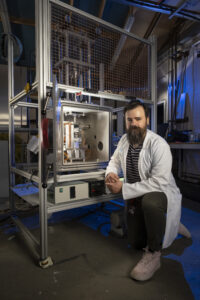
Explaining their rationale for the initiative, the team highlighted that because objects in space are subjected to a hard vacuum that cycles rapidly between extremes of temperature, imperfections such as tiny bubbles or poorly melted sections that might be inconsequential on Earth can behave differently in space. They went on to point out that those flaws could cause 3D-printed objects to shatter, scattering dangerous fragments into orbit which would contribute to the growing problem of ‘space junk’ – pieces of debris from defunct satellites, previous space missions or collisions between human-made objects in orbit.
Dr Bailet said, “3D printing is a very promising technology for allowing us to build very complex structures directly in orbit instead of taking them into space on rockets. It could enable us to create a wide variety of devices, from lightweight communications antennas to solar reflectors to structural parts of spacecraft or even human habitats for missions to the moon and beyond.
“However, the potential also comes with significant risk, which will be magnified if efforts to start 3D printing in space are rushed out instead of being properly tested. Objects move very fast in orbit, and if a piece of a poorly-made structure breaks off it will end up circling the Earth with the velocity of a rifle bullet. If it hits another object like a satellite or a spacecraft, it could cause catastrophic damage, as well as increase the potential of cascading problems as debris from any collisions cause further damage to other objects.
“The NextSpace TestRig is open to academic colleagues, researchers and commercial clients from around the world to help them ensure that any materials they plan to 3D print in space will work safely. We also expect that the data we’ll be gathering in the years to come, which can’t be replicated anywhere else in the world at the moment, will help regulatory authorities to make safety standards for in-space manufacturing, informed by real-world testing.”
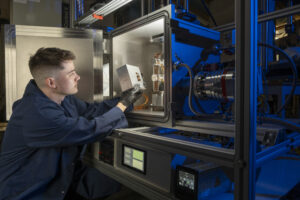
He added, “We expect that the NextSpace TestRig will be of real use to the UK space industry in the years to come. Glasgow is already a center of excellence for space technology – companies here manufacture the most satellites in the world outside the west coast of the USA. Our facility will help augment the capabilities of future spacecraft assembled in orbit, ensuring that the UK space sector can be more competitive internationally.”
Iain Hughes, head of the national space innovation program at the UKSA, said, “We are proud to have supported the University of Glasgow in developing the world’s first facility for testing 3D-printed materials in space-like conditions. This innovation will help to drive UK advancements in space manufacturing, unlocking numerous benefits and meeting the government’s growth ambitions while ensuring safe and sustainable space use.”
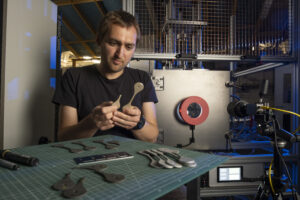
In related news, Massachusetts Institute of Technology (MIT) aerospace engineers recently found that greenhouse gas emissions are changing the environment of near-Earth space in ways that, over time, will reduce the number of satellites that can sustainably operate there. Click here to read the full story


